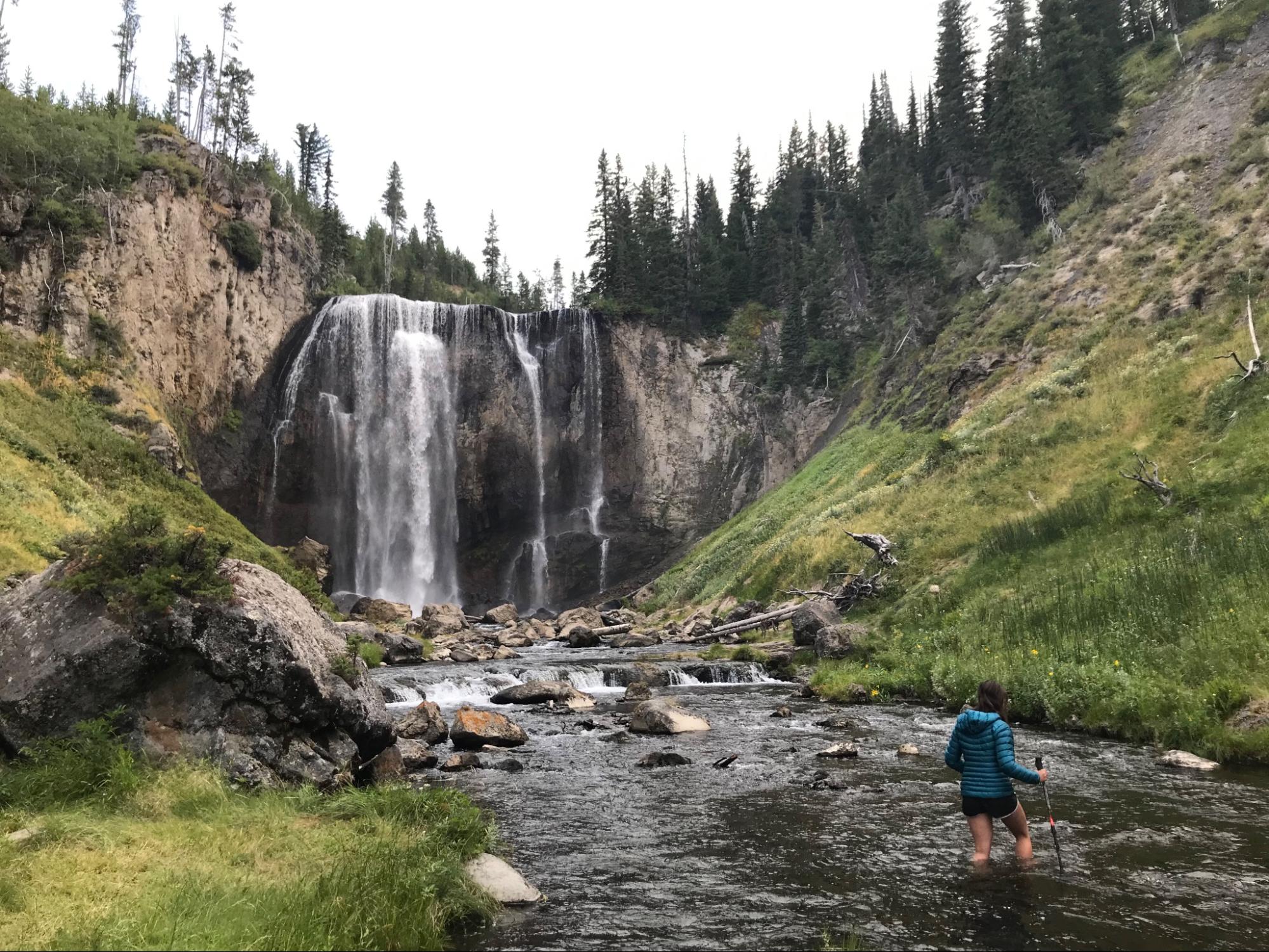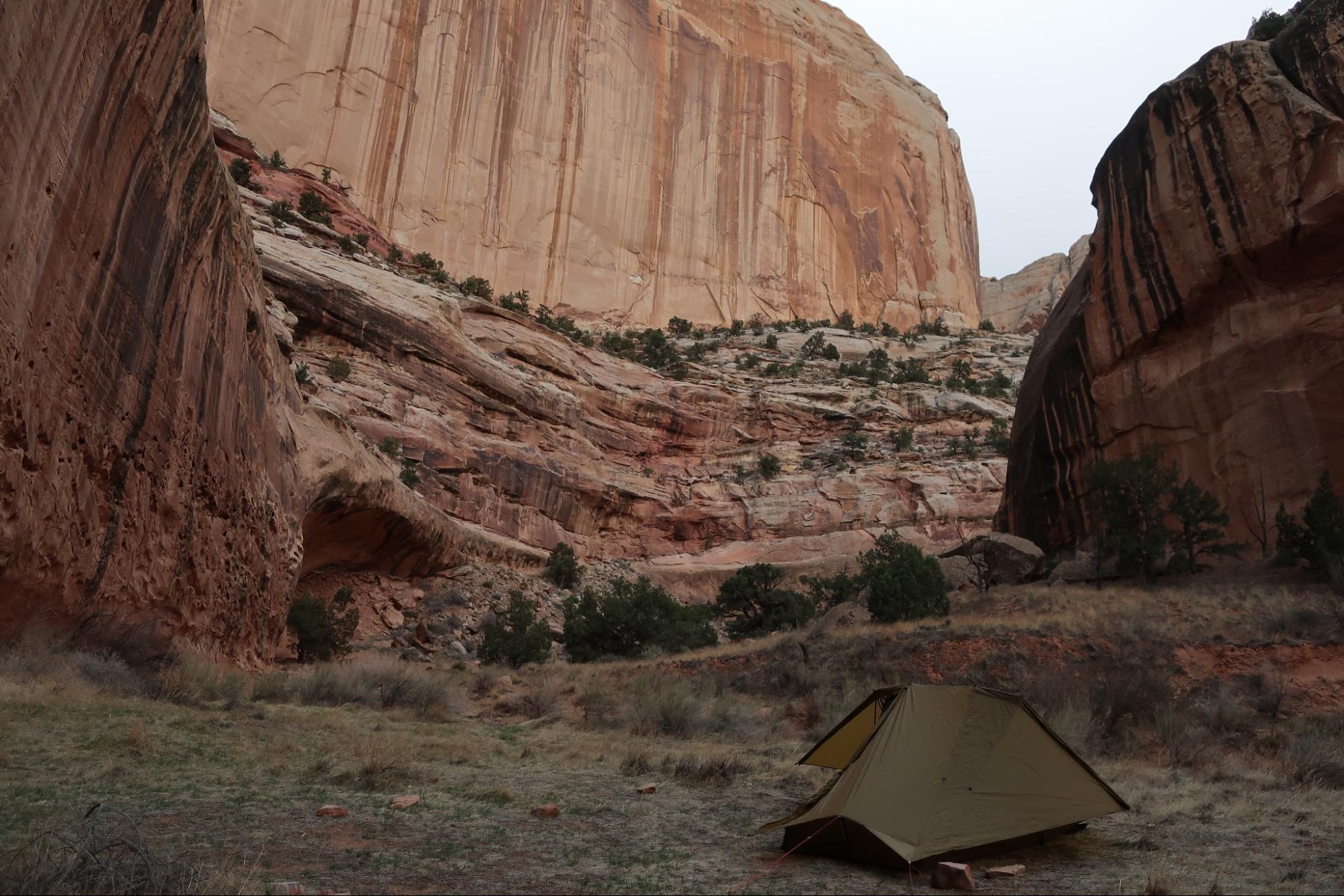As a backpacker living in western Montana, needing a permit to go backpacking is the exception rather than the rule. Outside of Glacier and Yellowstone National Parks, you can arrive at pretty much any trailhead you want and hike into the backcountry for a trip of any length and destination of your choosing. Campsites in the national forests are almost exclusively first-come, first-served (aside from rental lookouts and cabins) and there’s no zone quotas or other restrictions limiting travel. In the mountain range where I do most of my backpacking, the luxury of being flexible in my destination if solitude is my priority is much appreciated. If I pull up to a trailhead and there’s a dozen cars and a Boy Scout troop van, I can easily just drive a half-hour to the next canyon and leave the crowds behind. But more often than not, even on holiday weekends, I can count most of the cars on one hand at all but the most popular trailheads. And, perhaps most importantly, based on what I see as a visitor – these areas don’t yet need permits to preserve opportunities for solitude and avoid adverse impacts to the landscape from concentrated visitation.

Needless to say, this makes the browsing of maps and guidebooks and planning trips a productive pastime, since I won’t mind my trips derailed by the inability to secure a permit. Trips are derailed or don’t happen due to natural causes – fire closures, excessive smoke from wildfires, weather issues, or lack of time. And to be quite honest, I’ve become frustrated enough by the competitiveness and complexity of backpacking permits for national parks that I’ve stopped trying in recent years to even attempt snagging a permit for most “life list” trips and national parks. I’ve been lucky enough to have a friend who is more diligent and patient with applying for permits and have been lucky enough to tag along with him on trips to Glacier National Park in recent years.
Other than a trip in North Cascades National Park that was marred by five straight days of thick wildfire smoke, which irritated my throat and limited visibility to only a mile or so, I’ve never been disappointed by a backpacking trip. Even ones that have been rainier than I would’ve liked, or which ended prematurely for various reasons, or where the trails were in frustratingly poor condition they’ve have always had some elements of exploration and enjoyment which cause me to remember them fondly. Oddly, I have found myself increasingly disappointed by trips that don’t happen as a result of not getting a permit to even start them in the first place.
In 2022, the only place I can recall backpacking where I needed a permit was Craters of the Moon National Monument in Idaho where I visited for a lunar eclipse. Although the landscape is otherworldly, the limited options for backpacking, the harsh landscape and climate, and the burden of having to pack in all the water you need means that the demand for backpacking isn’t anywhere close to outpacing the supply. It is rare for there to be two groups backpacking at the same time in the entire 43,243 acre Craters of the Moon National Wilderness Area. The permit was a simple matter of stopping by the ranger station, receiving a brief orientation, providing an estimated itinerary and route, and then heading out to the trailhead. Prior to that, my most recent experiences with permits for backpacking were for Yellowstone National Park, Aravaipa Canyon Wilderness, and Capitol Reef National Park – in order of most to least competitive.
In 2019 and 2020 when I applied for backpacking permits for Yellowstone National Park, the permit reservation system was structured in a way in which permit applications were randomly processed in early spring before going to being processed in the order in which they were received. Under that system, which involved using a fax machine at the local library to submit the permit application, I was able to specify a wide range of dates, campsites I was willing to accept, and even the option of reversing the itinerary I had proposed. This option to indicate flexibility is likely what allowed me to be successful two years in a row at getting a permit for a four-night backpacking trip that included two nights at a campsite near a phenomenal hot springs.
Once the backcountry permitting system was moved to recreation.gov for 2022, along with the permits for most other federally-managed recreation units, the format changed. Users – which seems like a weird way to characterize potential backpackers yearning for amazing natural experiences – simply entered into a lottery and then received a time and date slot to log in and pick from the sites that were still available. Those who received a time and date slot earlier in the window were much more likely to get the trip they wanted than those who drew a later slot. I’ve never received one of the slots in the first half of the window after two years of trying. By the time I’ve been able to access the reservations, all the nights for that campsite for the entire season have been completely booked.

While I’m fortunate enough to be able to backpack with a degree of spontaneity that is rare in other parts of the country, and have been on many trips to incredible places in nearby wilderness areas, I do enjoy the level of planning and anticipation that comes with planning trips to national parks. The trip to Aravaipa Canyon Wilderness in 2019 did have a few nail-biting moments when trying to secure the permits for the three continuous days needed (the maximum allowed by the Bureau of Land Management), but overall it felt attainable. When browsing recently for both nostalgia and comparison’s sake, things appeared to be booked within a few hours whereas in previous years there was still availability days after the booking window opened.

While I’m more than content to primarily limit my backpacking trips to within a half-day’s drive of my home, I do have an urge to explore other landscapes. For those that are national parks, it seems like concentrating my efforts on those with less rigorous permitting processes – like Capitol Reef National Park – seems to be the best approach for someone like me who takes it personally when they can’t backpack on public lands due to onerous permitting requirements. I realize this selfishness and entitlement in my perspective, and I don’t relish feeling this way, especially since I can easily backpack in the Northern Rockies with little planning and only a few miles of driving. Where I feel the most sympathy is for those who don’t live close to public lands and have to plan their trips with an efficiency and economy that leads them to becoming reliant on obtaining a permit with a set date, set itinerary, and near-guarantee of incredible scenery (smoke and weather being the major variables). While the solution to visit a national forest or other that doesn’t require a permit is certainly an option for anyone who wishes to backpack, there’s less information on how to put together a comparatively outstanding trip for these places compared to a national park. The national park trips ostensibly provide much more of a “sure thing” if you can manage to snag a permit.
Perhaps the silver lining to this cloud created by permits is that backpackers will become more informed about, and involved with, the stewardship of national forests. By becoming aware of the amazing outdoor recreation opportunities on these public lands, and the challenges that face them (particularly deferred maintenance for trails), there might be more volunteerism among trail work organizations and discussion of how to utilize these resources without loving them to death and ultimately having them fall under the purview of permits as well.




Home › Forums › Backcountry Permits: Navigating Logistics and Disappointment in the Modern Technological Age